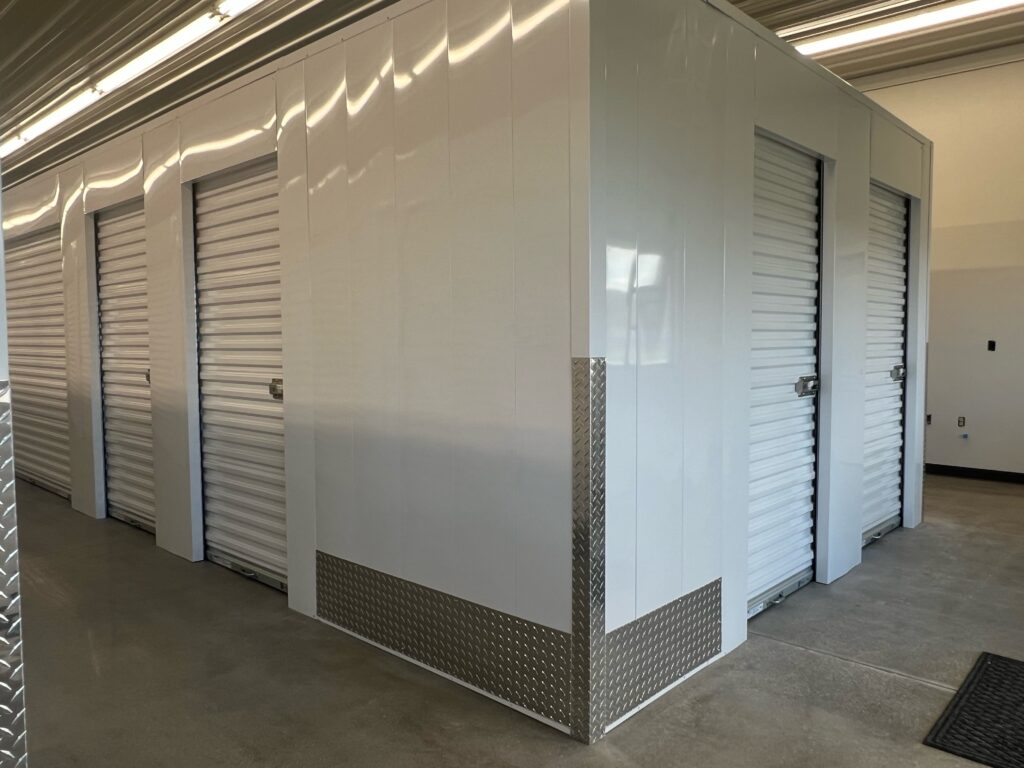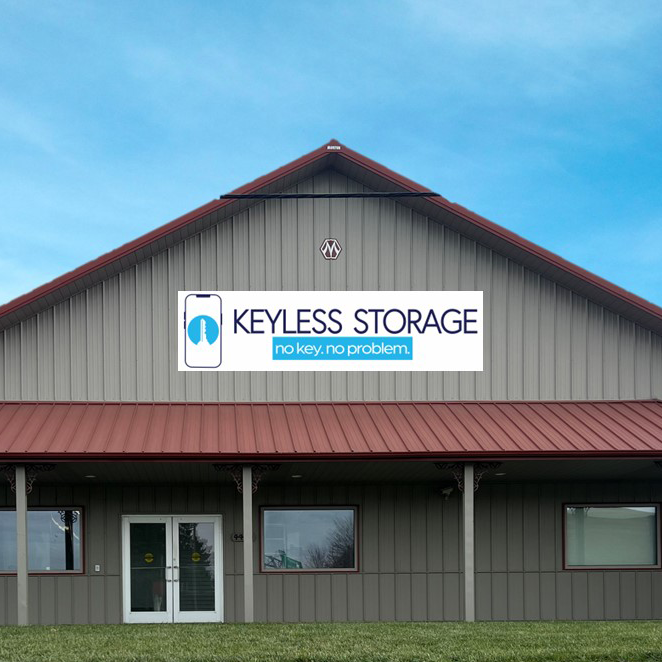Benefits of Video Surveillance: 5 Ways It Cuts Risk & Cost
You’re under pressure to cut risk without ballooning your budget. Theft, trespassing, and false claims don’t just cost money—they drain time and trust. After-hours visibility is spotty, guard coverage is pricey, and when something goes wrong you need proof, not guesses. If you’re weighing the benefits of video surveillance, you’re really asking: Will cameras measurably reduce incidents, speed response, and lower total security costs?
This article answers that with a practical, numbers-minded look at five ways video surveillance cuts risk and cost. You’ll see how modern systems deter losses before they happen, trim labor and insurance expenses, enable real-time remote monitoring, and deliver clear evidence that resolves incidents and limits liability. We’ll also highlight a real-world example—Keyless Storage in Sioux City—where 24/7 video works alongside keyless entry and climate control to protect people, property, and margins. Expect plain-language guidance on what matters, why it pays, and how to implement it right (from camera placement and retention to alerts and privacy). Ready to make a confident, defensible case for your security spend? Here’s how to capture the upside of video—without overspending on hardware or manpower. https://www.youtube.com/embed/6zlMR7ifKaM
1. Keyless Storage: 24/7 video at a keyless, climate-controlled facility in Sioux City
What it is
Keyless Storage is a modern, climate-controlled self‑storage facility in Sioux City that pairs smartphone-enabled entry with 24/7 video surveillance. Every unit is ground-floor for easy loading, rentals happen online in minutes, and always‑on cameras keep watch across entries, exits, drive aisles, and loading zones—giving staff and customers reliable visibility day and night.
Why it matters
The benefits of video surveillance are amplified when they work alongside keyless access. Cameras deter trouble, provide a real‑time overview of secure areas, and confirm who accessed what and when—supporting faster response and better access control. For residents and businesses storing valuables or inventory, that combination delivers peace of mind, operational oversight, and a clear record if something needs review.
Dollars-and-cents impact
Continuous video can reduce reliance on on‑site guard coverage and help businesses qualify for lower insurance rates by proactively reducing risk. Clear footage also cuts investigation time, disputes, and false claims—costs that add up quickly. Want a simple way to frame the return? Use ROI = (Net Benefits / Total Costs) × 100 and include avoided losses, labor saved, and any premium reductions.
How to do it right
Pairing keyless access and cameras pays off most when coverage and configuration match real risks and workflows.
- Cover choke points: Entrances/exits, hallways, and loading areas first.
- Sync with access logs: Correlate mobile access events with video clips.
- Enable alerts: Real-time notifications for off-hours motion or forced access.
- Design for the dark: Use proper lighting and low‑light cameras for night clarity.
- Protect privacy and uptime: Post signage, mask private areas, and back up recordings to resilient storage with routine health checks.
2. Deter theft, trespassing, and vandalism before it happens
What it is
Deterrence is the first and biggest benefit of video surveillance: visible, well‑placed cameras and active monitoring that signal, “You’re being watched.” Add smart analytics (motion, line‑crossing, loitering) and remote operators who can speak down or dispatch, and your cameras function like a virtual security guard—without gaps in attention.
Why it matters
Most losses are opportunistic. Cameras lower the chance a bad actor even tries, while giving a real‑time overview of secure areas so teams can verify threats and respond quickly. Industry sources note cameras deter criminal activity, support operational oversight, and improve emergency response—practical advantages that reduce incidents rather than just recording them after the fact.
Dollars-and-cents impact
Every avoided incident saves on shrink, repairs, downtime, and claims. Public examples show measurable reductions when cameras go in; for instance, reported crime incidents in Humboldt Park dropped 20% after surveillance was added. Fewer attempts mean fewer payouts and less time spent investigating—compounding savings that make a strong case for video as a frontline risk reducer.
How to do it right
Design for prevention first, then proof.
- Make cameras obvious: Use signage and visible housings to amplify deterrence.
- Cover choke points and blind spots: Entrances, exits, corners, and high‑value zones.
- Use smart alerts: Trigger on off‑hours motion, loitering, or perimeter breaches.
- Pair lighting with low‑light cameras: Clear images are non‑negotiable at night.
- Enable voice‑down/escalation: Live audio warnings stop many events in seconds.
3. Reduce security labor and insurance costs
What it is
Modern video surveillance replaces a portion of on‑site guard hours with always‑on cameras, smart analytics, and remote operators. The result is continuous coverage that scales across entrances, lots, and corridors—plus documented risk controls that many insurers view favorably when pricing policies.
Why it matters
Human patrols are episodic; cameras watch continuously and don’t lose focus. Industry sources highlight video as cost‑effective because it reduces reliance on physical guards and supports a real‑time overview of secure areas—key benefits of video surveillance that lower incident rates and strengthen access control. Insurers often discount accounts that proactively reduce theft, vandalism, and liability exposure.
Dollars-and-cents impact
Replacing overnight or secondary guard posts with remote monitoring can trim recurring labor spend while preserving deterrence. Documented surveillance also helps negotiate better premiums by lowering loss likelihood, and clear footage shortens investigations and disputes. To frame the case, tally avoided guard hours, estimated premium credits, and incident‑handling savings against system ownership and monitoring fees.
How to do it right
Blend people and technology where each is strongest, and package controls for your underwriter.
- Right-size guard posts: Keep only high‑value, high‑touch positions.
- Schedule remote monitoring: Cover off‑hours and low‑traffic windows.
- Capture the basics: Time‑stamped video, access logs, and clear signage.
- Retain and back up footage: Meet insurer and legal expectations.
- Audit quarterly: Share reports on uptime, alerts, and resolved incidents.
4. Speed response and streamline operations with remote monitoring
What it is
Remote monitoring connects your cameras to trained operators or your own team so alerts are verified in real time from a phone or desktop. With analytics (motion, line‑crossing, loitering) and optional two‑way audio, cameras act like a virtual guard—watching continuously and escalating only when it matters.
Why it matters
One of the core benefits of video surveillance is a real‑time overview of secure areas and faster emergency response. Instead of discovering problems at shift change, you see them as they start—whether that’s a perimeter breach, a stuck overhead door, an after‑hours delivery, or a safety protocol being missed. Faster eyes mean faster fixes, fewer disruptions, and safer sites.
Dollars-and-cents impact
Remote monitoring turns expensive patrols into lower‑cost, event‑driven verification. That cuts false alarm fees, unnecessary call‑outs, and overtime while reducing incident severity through earlier intervention. When you stack avoided losses and labor against modest monitoring fees, the efficiency gains compound across nights and weekends.
How to do it right
Design your monitoring plan around clear signals and clear actions.
- Alert on intent, not noise: Use zones/schedules so after‑hours motion and loitering trigger alerts; ignore expected activity.
- Script escalation paths: Define who verifies video, who gets called, and when to dispatch or issue an audio warning.
- Enable audio talk‑down: A live voice stops many events before they become incidents.
- Map feeds to places: Consistent camera names, site maps, and bookmarked views speed operator response.
- Test and harden uptime: Monitor camera health, record locally with cloud backup, and document retention and privacy signage.
5. Provide clear evidence to resolve incidents and limit liability
What it is
Evidence-grade video ties who, what, and when into a single, verifiable record. Properly placed cameras capture clear angles, time stamps, and context so you can reconstruct events, verify access, and hand over concise clips to police, insurers, or legal teams without guesswork.
Why it matters
When something happens, you need facts fast. One of the biggest benefits of video surveillance is reliable documentation for investigations and court-ready evidence. Studies have found footage is useful in a majority of robbery and assault investigations (roughly six in ten cases), and industry sources note it strengthens operational oversight and emergency response.
Dollars-and-cents impact
Clear video shortens investigations, curbs false claims, and narrows disputes—reducing legal spend, downtime, and administrative hours. Insurers also look favorably on documented risk controls, which can help in premium negotiations. Translate that into savings by tallying avoided claims, faster claim closures, and fewer paid hours chasing statements.
How to do it right
Build for identification, integrity, and compliance.
- Capture what matters: High‑resolution views of faces, plates, entrances/exits, and loading zones with adequate lighting.
- Lock the timeline: Time‑sync cameras and correlate video with access control logs.
- Protect chain of custody: Use retention policies, tamper‑evident exports, and resilient backups (onsite plus cloud).
- Respect privacy: Post signage, mask sensitive areas, and avoid places with a reasonable expectation of privacy.
- Standardize retrieval: Predefine clip‑export settings, bookmarks, and naming so staff can pull evidence in minutes, not hours.
Next steps
You’ve seen how the right video strategy cuts incidents, trims guard spend, wins insurance favor, and closes cases fast. Turn that into action: define your top risks and success metrics, map cameras to entrances, aisles, and loading areas, set smart alerts and escalation paths, and lock in retention, backups, and signage. Run the numbers with ROI = (Net Benefits / Total Costs) × 100 using avoided losses, reduced labor, and premium improvements. If you want a working model to emulate—or need secure storage with these controls in place—see how smartphone entry, climate control, and always‑on cameras come together at Keyless Storage. Check availability, pick a unit size, and rent online in minutes with year‑round, 24/7 access.



